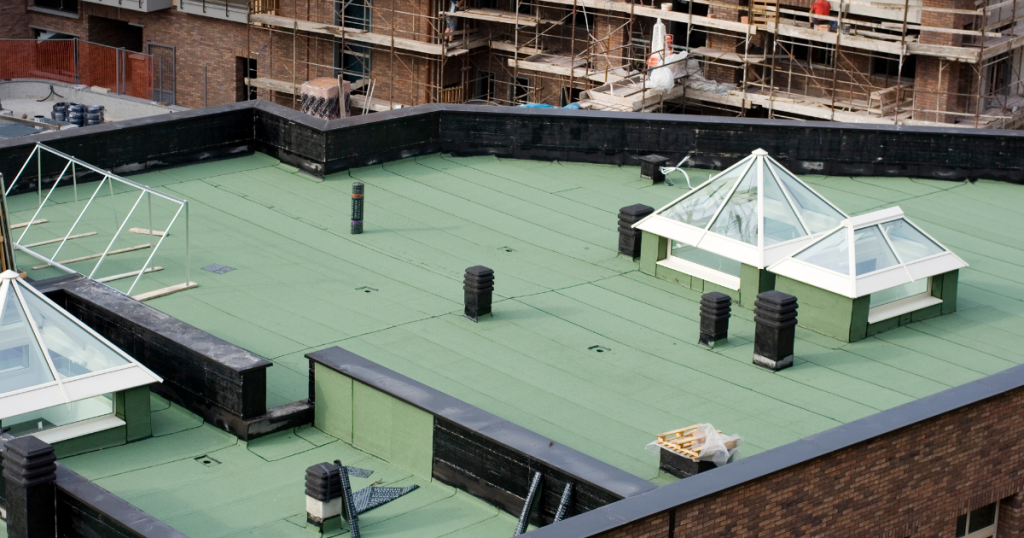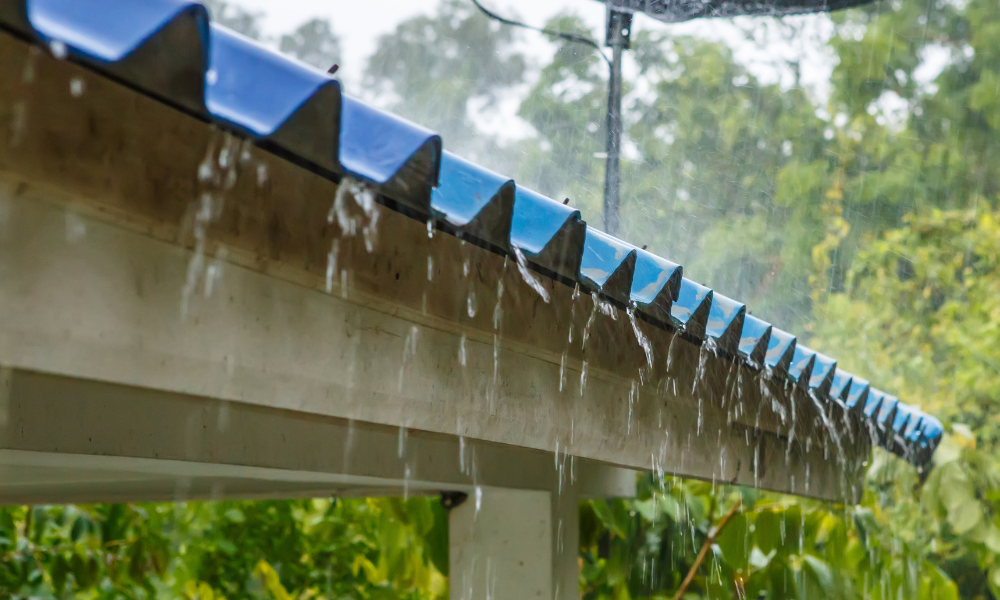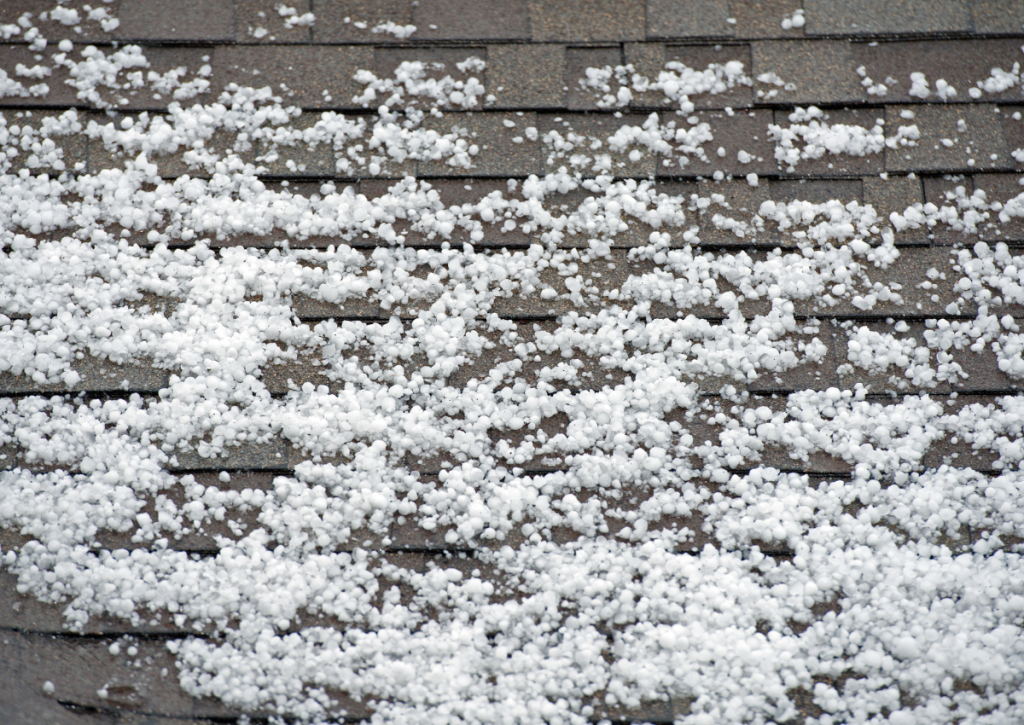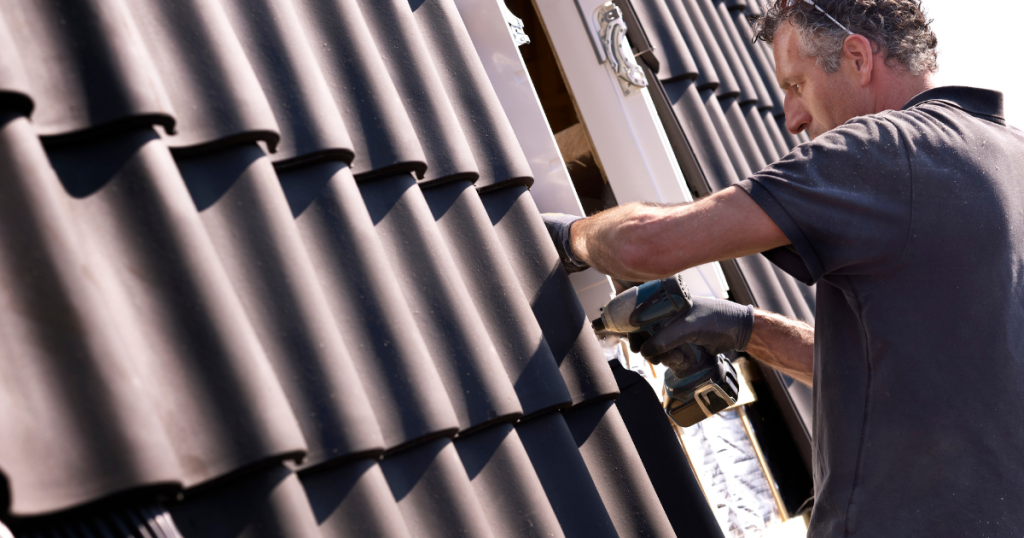It’s a fact that all roofs will leak eventually. Whether due to damage, wear and tear, or just getting old — it’s inevitable, unless you do regular preventive steps to keep it leak-proof. Nowadays, commercial building owners would prefer to use a waterproofing roof membrane over a standard roofing system to protect their infrastructures.
The challenge lies in determining which type is right for your building. Don’t worry! We will help you learn more about the different types of waterproofing membranes for your roof and everything there is to know about. So, keep reading!
What is a waterproofing membrane roof?
A waterproofing membrane roof is a layer of material that covers the top of a roof. It helps keep water from penetrating the bottom layer, which can cause problems like mold and mildew.
What are the Uses of Waterproofing Roof Membranes?
A waterproofing membrane for roofing is used to create a barrier against water infiltration to protect the building and its contents. Some of its main usages include:
- Protecting the building structure: The main function of a waterproofing membrane is to protect the building structure from water damage. This is especially important in commercial and industrial buildings, where a leaking roof can cause significant damage to the building and its contents.
- Improving energy efficiency: A waterproofing membrane can help to improve the energy efficiency of a building by preventing heat loss through the roof. This can help to reduce energy costs and make the building more comfortable to occupy.
- Enhancing the appearance: In some cases, a waterproofing membrane is also used to enhance the appearance of a building. For example, a white membrane can reflect sunlight and help to reduce the heat gain in the building during summertime.
- Reducing maintenance costs: A waterproofing membrane can also help to reduce maintenance costs by protecting the roofing system from damage caused by water infiltration. This can help to extend the life of the roof and reduce the need for costly repairs.
[Related: 5 Things To Know When Waterproofing Commercial Building Structures]
Types of Waterproofing Membranes
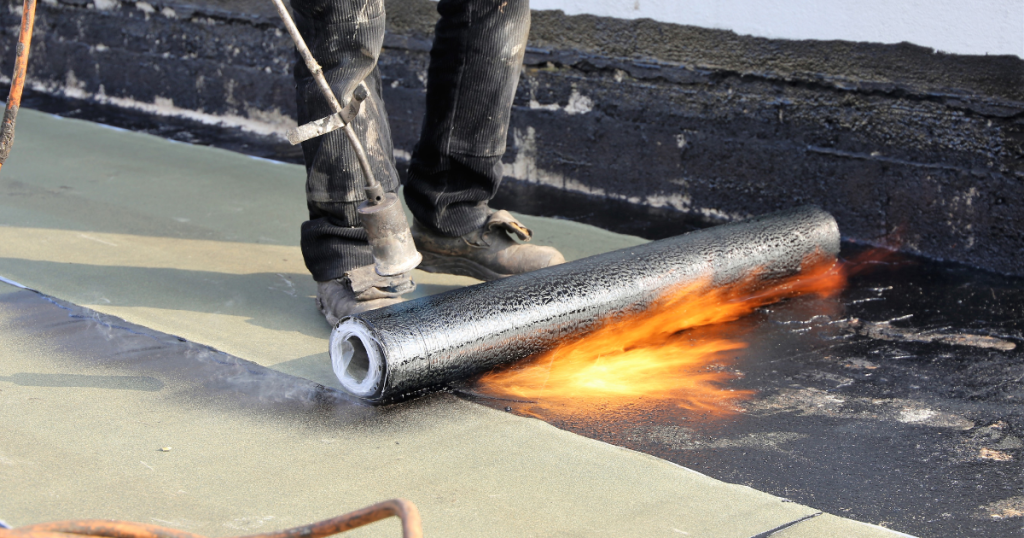
Here are the most common choices for waterproofing membranes that you can use for your commercial roof:
Liquid Membrane Waterproofing:
Liquid membrane waterproofing is a method of applying a waterproof coating to a surface using a liquid material. The liquid material is typically applied using a roller or brush and forms a continuous, seamless membrane on the surface.
The most common type of liquid membrane waterproofing is cold-applied liquid-applied membranes. The liquid membrane is applied in multiple coats in an existing roof and is allowed to dry between each application. Once the final coat is applied and has dried, the surface is ready for use.
Where is it applied?
- Roofs and balconies
- Foundation walls
- Above-grade and below-grade surfaces.
Cementitious Waterproofing:
This type of waterproofing is typically applied as a dry powder and mixed with water on-site to form a slurry or paste. The mixture is then applied to the roof surface and allowed to dry, forming a waterproof barrier.
The main advantage of cementitious waterproofing for roofing is its durability and long-lasting performance. Cement-based materials are resistant to extreme temperatures and weather conditions, making them an ideal choice for roofing. Additionally, cementitious waterproofing can be used to repair and waterproof existing roofing systems.
Where is it applied?
- Concrete roof
- Clay tile roof
- Metal roof
Bituminous Coating Waterproofing Or Asphalt Coating:
Bituminous coating and asphalt coating are both types of waterproofing for roofs. Bituminous coating is a liquid-applied, asphalt-based coating that is typically used on flat or low-sloped roofs. It provides an effective waterproof barrier and can also help to protect the roof from UV rays.
Asphalt coating, also called “hot tar” or “asphaltic” coating, is a similar product that is applied as a hot liquid. It also provides a waterproof barrier and can protect the roof from weathering. Both types of coating are durable and can last for several years, but they should be reapplied periodically to maintain their effectiveness.
Where is it applied?
- Flat roof
- Low-sloped roof
FAQs About Waterproofing Membranes for Roofs
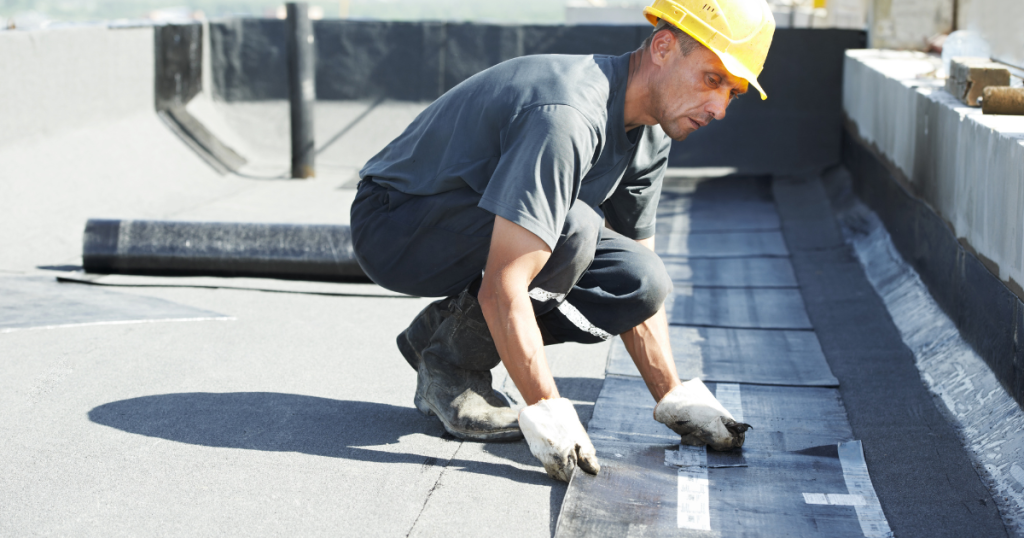
What is the best waterproofing material for a (commercial/industrial) roof?
The best waterproofing material for a commercial or industrial roof depends on your specific needs and situation. You’ll want to consider things like whether you need the roof to last a long time, how much water will be coming into contact with it, and what kind of maintenance you can afford to do.
How do you use a waterproofing membrane on a roof?
First, you need to install a vapor barrier. This prevents water from getting through your roof and into your home.
Next, apply a liquid membrane, which will create a barrier between your roof and the water that’s trying to get in. This layer is applied either with a brush or roller and will protect against water damage while also providing an airtight seal.
What can I put on my roof to make it waterproof?
There are a lot of different kinds of waterproofing material that you can use for your roof. You may choose from Polyurethane Membrane Waterproofing, Bituminous Membrane Waterproofing, Liquid Membrane Waterproofing, Cementitious Waterproofing, Bituminous Coating Waterproofing, Or Asphalt Coating.
Are You In Need of Waterproofing Services?
The key to getting high-quality and long-lasting waterproof membranes for your commercial building is by trusting the expertise of an experienced roofing contractor like Easy Roof Solutions. Contact us today for a free quote!
Ken Byler
Founder of Easy Roof Solutions, LLC. He started in the construction industry at the age of 14 and has been involved in it for over 25 years. His wide experience in commercial roofing speaks for itself.
Outside his roofing work, Ken enjoys being in the great outdoors, traveling to new places, and bonding with his wife and children.

